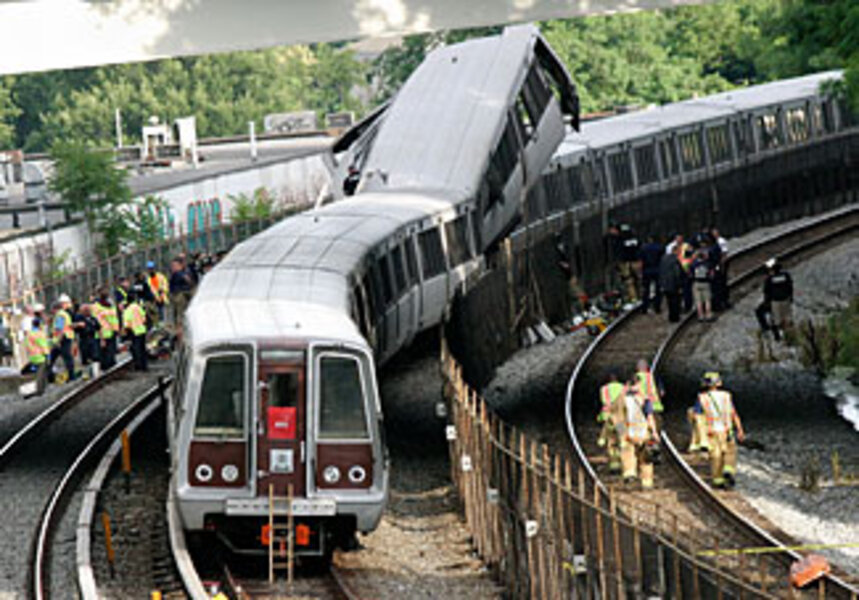Emergency response to Metrorail crash shows post-9/11 gains
| Washington
First responders' effective handling of Monday's rail accident in Washington, coupled with the smooth rescue after a Hudson River plane crash in January, may indicate that the post-9/11 demand for better, faster emergency response is being met – at least in some of the nation's big cities.
"The regional response that is required during extraordinary incidents (Hudson and Metro being two good recent examples) has, in my opinion, significantly improved since 9/11," Daniel Kaniewski, deputy director of George Washington University's Homeland Security Policy Institute, wrote Wednesday in an e-mail interview. He served in the Bush White House as special assistant to the president for homeland security and senior director for response policy.
Triggering an effective response
On Monday afternoon, one Metrorail train slammed into a second train stopped outside the Fort Totten Station in Northeast Washington. The impact pushed part of the moving train onto the top of the stationary train. Two-thirds of the moving train's lead car was crushed, killing nine and injuring more than 70 people.
The Metrorail accident, which disrupted the daily commute for thousands in the Washington area, tested how the nation's capital would cope with a major incident. What happened was "an effective regional response," Mr. Kaniewski said in an online commentary.
In the wake of the accident, emergency vehicles converged on the scene. "As I monitored the radio traffic of the local agencies involved, I expected to hear chaos; but instead I heard the calm and ordered dispatch of emergency units and informative reports from arriving personnel," Kaniewski wrote.
Response teams working in unity
"When the DC resources became stretched, pre-identified units from surrounding jurisdictions were alerted and communicated on the same channel as DC units. There were no apparent coordination or communications issues ... police, fire, emergency medical services, transit, and emergency management officials worked together in a unified manner," the homeland security expert said.
There were, however, some ruffled feelings along the way. The Washington Post on Wednesday reported friction between city and Metro officials over Washington Mayor Adrian Fenty's assertive posture as lead spokesman during the crisis. "The spirit of cooperation is not what we would like it to be," Metro spokeswoman Candace Smith told the Post.
Confusion on casualties
The mayor came in for criticism for saying there were seven fatalities at a time when Metro and public safety officials already had determined that nine commuters had died in the crash. Mr. Fenty told the Post that he was using "an abundance of caution" in releasing the information and that "there's always things that could have been done differently."
During the Wednesday morning commute, Metrorail stations and trains were packed as trains moved at reduced speeds while the cause of the crash remained under investigation. The Takoma Metrorail station remains closed, clogging operations on the Red Line, the system's busiest.
The Associated Press reported that investigators from the National Transportation Safety Board planned to test the automated controls for Metro trains on Wednesday, looking for reasons the computerized system, which is designed to prevent collisions, failed to do so.





